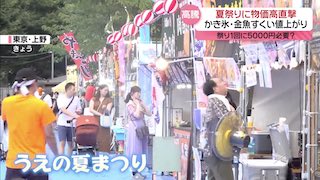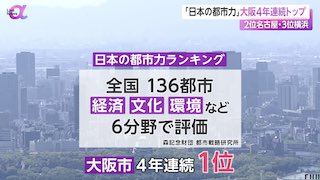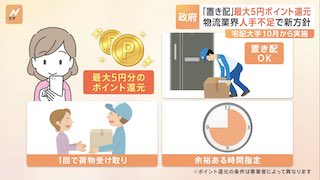TOKYO, Oct 31 (East Asia Forum) - Japan’s exchange rate environment made a big turnaround in 2022, when the yen began to depreciate sharply. When it exceeded 145 yen against the US dollar by September 2022, and then 150 yen in October, the Ministry of Finance conducted two rounds of foreign exchange interventions.
Partly due to a decline in long-term interest rates in the United States from November 2022, the exchange rate returned to below 140 yen. The response from the Bank of Japan (BoJ) also contributed to the appreciation, leading to the yen reaching 130 against the US dollar by early 2023. But the yen is still considered undervalued compared to Japan’s economic fundamentals — which are around 100 to 110 yen.
The extreme depreciation of the yen resumed from May 2023. Since early 2022, the yen has declined by an average of about 20 per cent against major currencies. Against the US dollar, the yen depreciated by around 30 per cent.
This is partly attributable to the BoJ’s monetary easing policy, yield curve control, that was adopted in 2016. This sets short-term interest rates at negative 0.1 per cent and aims for 0 per cent for 10-year long-term interest rates. For the 10-year interest rate, a small fluctuation range has been permitted.
While the United States and Europe are shifting to interest rate hikes to curb inflation, the BoJ has maintained yield curve control. The widening of the interest rate differential has led to a sharp depreciation of the yen. Market participants widely believe that the BoJ raised the fluctuation range of the 10-year interest rate from plus or minus 0.25 per cent to plus or minus 0.5 per cent in December 2022.
Under the new leadership of Governor Kazuo Ueda, the BoJ further raised the fluctuation range of long-term interest rates to 1 per cent in July. But unlike in 2022, they left 0.5 per cent as a reference. This meant that fluctuations of up to 1 per cent can be tolerated, but the BoJ will try not to let the long-term interest rates deviate significantly from 0.5 per cent.
Investors found this policy difficult to understand. It was unclear whether the central bank wanted to maintain a low-interest policy to increase domestic demand to achieve the 2 per cent inflation target, or raise interest rates to alleviate excessive depreciation of the yen.
The depreciation of the yen progressed even after the policy adjustment. By leaving the reference rate at 0.5 per cent, the exchange rate market judged there was little intention for the central bank to raise interest rates significantly, leading to foreign exchange transactions where people felt reassured to sell yen and buy high-interest dollars.
US monetary policy has greatly influenced the interest rate differential. The US economy is stronger than expected, with a tight labour market. Inflation stands at 3.7 per cent, but excluding energy and food is still above 4 per cent. To ensure inflation decreases toward the 2 per cent target, there is a possibility of a further rate hike or maintaining current high interest rates (5.25 to 5.5 per cent).
The sharp depreciation of the yen is causing import prices to soar, keeping Japan’s inflation well above the 2 per cent target. The BoJ revised the inflation rate for the 2023 fiscal year from 1.8 per cent to 2.5 per cent. The current inflation rate is in the 3 per cent range, with food prices accounting for 70 per cent of this inflation. This is eroding the purchasing power of consumers, leading to a decline in real consumption.
Even with the yen’s depreciation, Japan’s trade deficit continues and export quantities have not increased. Industrial production and corporate investment remain sluggish. While the government’s revenue is increasing due to inflation-induced income and consumption taxes, this is essentially a tax hike. Wage growth has not caught up with the rate of inflation.
Japan’s the services sector is enjoying an increase in foreign demand — driven by the yen’s depreciation. Hotels are full and tourist spots are overflowing. Another 10 per cent of Japan’s inflation arises from rising hotel fees, thanks to the tourism boom. With the rising cost of construction materials and foreign demand for real estate, house prices have also increased. It is also a good time to buy Japanese stocks, which has contributed to good stock market performance in 2023.
The BoJ’s challenges are enormous. How to correct the extreme depreciation of the yen — without causing significant damage to markets, while also committing to a 2 per cent inflation target — is an unprecedented challenge. Markets widely anticipate the BoJ’s monetary policy normalisation, including removing the negative interest rate policy and the yield curve control 10-year target within the next two years.
Given rising government and corporate debt, a rapid interest rate hike is likely to cause significant stress to the economy. The BoJ needs to improve communication with the market and the public about their future monetary stance. They need to explain how to achieve the 2 per cent inflation target in the long run, when interest rates become more flexible and possibly higher. Adopting an inflation target range, such as 1 to 3 per cent, rather than sticking to a single 2 per cent numerical target could be another option.
Sayuri Shirai is Professor at Keio University and a former policy board member of the Bank of Japan.















